Buzz Blog
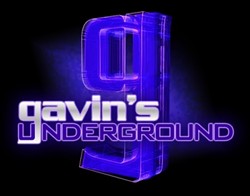
If
you're physically reading this blog entry within the state of Utah,
chances are the connection you're using is provided by XMission.
The local internet provider that's been going nearly seventeen years
now, before the web was found in every home and business. The
company itself provides thousands with as high grade a service as its
major competitors, while also maintaining a free system throughout
parts of downtown. And if not for one man behind it all, we probably
wouldn't have these options at all.

--- Pete Ashdown was
originally one of the driving forces in the early 90's behind the
rave movement, helping embed itself in local music and Utah culture.
His drive to find innovative and unconventional forms of
entertainment led him down the technological path and eventually had
him starting up his own ISP. Not to mention the interesting move to
run for the U.S. Senate a few years ago. I got a chance to chat with
Pete in an extra-long interview about his time with the raves,
starting up XMission, his Senate run, thoughts on the internet and
technology, and a few other topics along the way. And for you,
pictures of Pete! Lots of pictures of Pete.
Pete
Ashdown

http://www.xmission.com/
Gavin:
Hey Pete! First off, tell us a bit about yourself.
Pete:
I am a lifelong computer
nerd living out his dreams in Utah with three kids and a
wife.
Gavin:
What first got you interested in technology and did you do any
experimenting with it in your youth?
Pete:
My parents recalled how I was always taking apart the record player,
the tape player, or any technology I could get my hands on. They say
the biggest tantrum I ever had when I was a kid was after I spied a
telephone toy with dials and buttons in a Salt Lake City department
store. I wailed all the way home to Bountiful about it and wouldn't
stop until my father went back and got it. It got hacked with until
it was in pieces. Dad then built me version 2.0 which was made out
of 1.2" plywood, had its own turntable that played wooden
records with patterns, plus a dial controlled light-show. It is
still in my childhood home. In elementary school, arcade video games
started appearing in grocery stores and subsequently video game
consoles appeared in the home. They were a huge occupation for me.
Finally, when I was a teenager, I begged and cajoled my parents into
buying an Apple ][. Hacking and disassembling the guts of that
computer and it's software was more fun for me than any game made.
It was on the Apple ][ that I also got introduced to
telecommunications and what was possible with that. In 1985, I
upgraded to the Commodore Amiga and spent the next five years taking
that apart. I also managed to get my Amiga connected up as an early
"UUCP" node on the Internet in 1987. What was great about
the early home computers is that they were so much more open to
experimentation than most of what comes off the line today. They
were also vastly simpler.
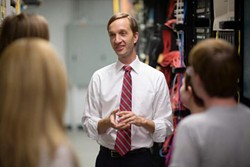
Gavin:
Originally you went to SLCC and then to the U to study film. What
made you want to pursue filmmaking, and how was it for you at both
colleges?
Pete:
I was very intimidated by the requirements for Computer Science and
didn't really think I could do it. I had always been a fan of film,
and computer animation was in an embryonic stage, so I figured maybe
I could go that route and be useful.
Gavin:
What eventually made you transfer into computers and technology as
your major?
Pete:
I was in the film program for a few years when I had a hard
realization that I was in the wrong department and I switched to
Computer Science. I was still studying that when I started XMission
in 1993 and it took over my life. I had about a year left until my
degree.

Gavin:
Not many know the full details, but for a time you had a major hand
in the club and rave scene in Salt Lake City, and were influential in
bringing that music and culture to the city. How did you first find
out about it, and how did you go about bringing it here?
Pete:
In 1990, I was working at Evans & Sutherland and studying
Computer Science at the University of Utah. Both had "realtime"
connections to the Internet, which offered a lot of other useful
tools, precursors to the web of today. I participated on a number of
music mailing lists, mainly geared for the burgeoning Industrial
Music scene and other new music. There was this rumbling about
electronic music artists like nothing before that described all night
parties in the English countryside and abandoned warehouses. I
couldn't find any of the music mail-order, but my friend John Webster
took a trip to Boston and picked up a bunch of titles I asked him to
look for at Newbury Comics. I was hooked. Electronic music was
something I had always enjoyed on my Amiga, and artists like The Orb,
Orbital, and Eon were taking it to another level. John and I both
rented out a space in Exchange Place, not far from where XMission is
today, and setup some enormous speakers with a DJ system. I DJ'ed
the entire night and I think most people really enjoyed it. We did
something on the order of twenty more raves from 1990 to 1994 until it
wasn't fun anymore. Part of the thrill was introducing others to the
concept and the music. That newness faded pretty fast.
Gavin:
What was it like for you personally to have played a part in it
during that period?
Pete:
Some have described me as the godfather of Utah raves. I really
wasn't trying to be out front on that. It was more an effort to have
fun than anything else. A third partner with me and John, Grant
Davis, went on to become a VJ that travels the world and he loves it,
but I started enjoying getting a full night's sleep, and XMission
also demanded much more time from me.

Gavin:
I've read that you never encouraged use of or took any drugs during
that period and it eventually made you quit going. How was it for you
to leave, and what's your take on that scene and how its progressed
over the years since?
Pete:
I made a lot a friends during those days and sadly have seen a few
die in accidents and overdoses. It was never about drugs for me, but
rather the music, the technology, and the visuals. I don't doubt
there were all sorts of stimulants at our raves, but we had to mind
the cash box and being loaded isn't a good idea if you want to make
your investment back. Even when I went to other raves, I spent more
time enjoying the artistry of the whole night than going for drugs.
I traveled to California a lot to see artists like Pete Namlook and
The Irresistible Force play, it was about the art for me. I wanted
to be fully present. As far as the scene today, I really have no
idea. There are a few of the people who work at XMission who DJ and
go to the different raves and parties and they like it a lot. I
won't cast judgment in some sort of "old school" fashion
and say it was better when I was doing it. All it was, was a
different scene. Today may be just as exciting for people involved
with it today.
Gavin:
How did you eventually get the job with Evans & Sutherland, and
what was that experience like working for the company at the
time?
Pete: I
applied three times to get a job there and it was like my dream-job
at the beginning. I worked there over the course of four years and
learned a lot about networking, UNIX, and the Internet. It became
apparent though that the management did not have a viable longterm
plan for the company. There was a "brainstorming" session
they asked all the teams to help decide company direction. I said at
the time that we needed to stop being dependent on military contracts
and look for commercial/consumer opportunities. Needless to say, my
idea wasn't executed on, and as E&S lost military contracts, the
size of the company dwindled through attrition and lay-offs. Many of
the people involved with E&S went on to start other successful
graphics and game companies, and of course, I left to start
XMission. The experience taught me a lot about corporate culture and
what I didn't want to participate in or create in the future.

Gavin:
What persuaded you to eventually branch out on your own and start a company?
Pete:
My boss kept telling me to get back to work and quit wasting time on
the Internet! Seriously though, I had no facility for using the
Internet at home, even though I could use it at work and school. I
figured there were others like me and there was a pending need for
home Internet access.
Gavin:
Where did the idea come from to start an internet service provider?
And where did the title XMission come from?
Pete:
Bulletin Board Systems (BBSs) had long been a staple of my time at
home. Using the Internet in the early 90's was like stepping in the
future of what a BBS could be. Getting a response to an email from
Australia within seconds was a real eye-opener for me. I knew that
this was something other BBS users would pay for, because I would.
There were about a dozen other ISPs around the country at the time.
I modeled much of the business off one in San Jose who responded to
my emails. Computers picked up a couple of abbreviations from the
military, XFER and XMIT for "transfer" and "transmit".
XMission is "transmission". Over the years, I have heard
a number of people give me different interpretations and I tell them
that its whatever they want it to be.
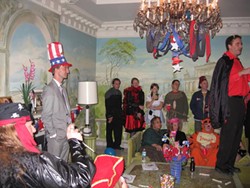
Gavin:
What was it like getting set up and functional, and where there any
major issues along the way or was it pretty smooth sailing?
Pete:
At first the University of Utah had some second thoughts about
selling me bandwidth, because they'd never encountered a situation
where someone would then be reselling it down the line. I gently
convinced them into a long lasting partnership. The original
location was in the phone closet of a friend's clothing store, and
when she went out of business, I was transferred to a salon who I had
a lot of problems with. There have always been problems and
challenges, some more serious than others, but I doubt I've seen them
all.
Gavin:
When you officially launched how was it keeping everything running
day-to-day and meeting the demand? And did you find a large consumer
base at first or were you fighting for users?
Pete:
Things went better than I guessed in my business plan when I opened
doors in 1993, but it wasn't until 1995 when business really
exploded. I was able to do all the management, accounting, and tech
support by myself up until 1995. Because XMission was the first ISP
in Utah, we became the defacto choice back then. Although we had as
many as 80 competitors later, I built a reputation that people sought
out for quality service.

Gavin:
When the internet craze and the “.com boom” really started
taking off, the demand in the U.S. shot through the roof. How were
you able to handle it and what changes over the years have you made
to the service to keep up with demand?
Pete:
In 1995, XMission couldn't keep up with the demand and I mistakenly
instituted a waiting list which haunted us for years after we didn't
need it anymore. I learned that if you're ever overwhelmed with
customers, raise your prices. We haven't encountered a need to do
that since and have been able to stay ahead of the curve with
sufficient bandwidth and facilities.
Gavin: Considering the service you provide, how do you deal with hackers
and identity theft over your system? And how do you combat them from attacking your users?
Pete:
Proactive system patching, redundant firewalls, and a robust backup
system just in case. Anyone of our size on the Internet is going to
have problems with intruders sooner or later, because no security
system is 100%. The fact that we have subscribers who can
unknowingly be duped into emailing their password to a stranger is
one of the bigger problems we have lately. We have a number of
strategies for combating those emails and blocking them from being
responded to, but it all comes down to vigilance and assuming we
aren't protected.

Gavin:
What made you choose downtown for the main hub location and how has
it been over the years being stationed on 4th South?
Pete:
In late 1994, I got a call from Vasillios Priskos. He told me that
he was starting a commercial real estate agency and his marketer said
he should call it "Internet Properties". The reason he
called me is that he now needed to understand what the Internet was.
I went and met with him in his office and told him that I needed some
space to open an office of my own, because up until that time I had
done most of the administrative work out of my apartment, with the
equipment in the aforementioned closet. He had some space and
XMission has been his tenant ever since. I really like being
downtown, primarily because I live less than two miles away from work
and can walk if I want, but also because downtown has much more
character, good food, and entertainment than a business park off
I-15.
Gavin:
One of the big milestones for you was running against Orrin Hatch
back in 2006 for his Senate seat. What first persuaded you to run and
what was it like for you being a politician during that time?
Pete:
Senator Hatch made a comment in 2003 about the possibility of
computers having a killswitch that could be engaged if they violated
copyright. I found the comment ignorant as a technologist,
embarrassing as a Utahn, and shameful as an American. I wrote him
telling him that I would do whatever I could to see him unseated in
2006. When 2005 rolled around, I started seriously thinking about
what that meant. In the end it meant running for office. Being a
politician was a big challenge for me, for most of my life had been
spent behind a computer screen. It is easy to spout opinion online,
it is much harder to get out and speak and try to convince others in
person. Moving from introvert to extrovert was difficult, but it
made me a better listener and a better person. Running for offices
was one of the best decisions I ever made and I am always encouraging
others to do the same, no matter their background. What also was
surprising to me was that as the campaign evolved it became less
about Senator Hatch and more about what I could do in Washington.
The ideals of accountability, transparency, and being connected with
government are all facilitated through the skills I have learned
building an Internet provider.

Gavin:
The result at the end was a loss, but you've been one of the
strongest candidates against Hatch in years. What were your thoughts
after losing the race, and would you ever run again?
Pete:
I was "in it to win it" and I really thought there was a
chance. There was a brief period when the early vote came in and it
showed me at 56% that I lost my breath, but in the end it wasn't so.
31% was fair for someone who started with 0% name recognition, but
closing that 20% gap would have required more time and more money. I
spent some time looking at other senate results around the country
and was happy to see that I wasn't dead last on fundraising, or
percentage points in challenging an incumbent. I did okay with the
results, but in Utah you have to run several times if you align
yourself with the Democrats. I want to run again. I wish I was
running this year. I didn't feel it was responsible to leave my
business in the midst of this bad economy.
Gavin:
A big project you undertook was to provide sections of downtown SLC
with free wireless internet, as well as non-profit organizations.
What made you choose to do that and how has it worked out for both
those businesses and XMission in the longrun?
Pete:
XMission has a flat donation policy of up to $50 in service to any
501c3. I started this early on and found that it was a good way to
give back to the community, which then in turn brings us loyal
customers. If we support an organization that an individual
supports, they are more likely to be and stay a customer because of
that. Free wireless worked out because it is an inexpensive
investment and does a lot to spread our brand. I look at it as
advertising more than a give-away. I'd actually like to do a lot
more of it, but budget wise it isn't a priority right now.
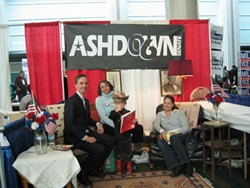
Gavin:
Something you're recently done is change the front wall of the
XMission building to a LCD tube display. Why did you change it and
how has the reaction been to that?
Pete:
The LCD tube display fronts the XMission Data Center which was
established in 2000. When that building was renovated, it was around
the time ZCMI was getting rid of their Christmas displays. Although
XMission isn't a department store, I thought I would do our part in
making our streetview interesting and dynamic. Up until last year,
we had "pods" and lighting that was designed by an art
director, Mark Hoflinger. After nearly a decade of that running, I
wanted something that we could control dynamically. The suggestion
was made to buy several plasma screens, but I felt like that was very
ordinary. I started looking into LCD tubes which I'd seen used at
concerts for The Police and Nine Inch Nails. The American company
that most people use for that wanted over half a million dollars to
install a system the size of the display window. I did some hunting
around and found a Chinese supplier that would sell to us directly
for a sliver of a fraction of that price. The only drawback was the
documentation and software were horrible. Teaming up with another
hardware-hacking employee, we spent most of 2009 installing and
reverse engineering their software. It still needs a bit of
tweaking, but I'm happy with the result. It is unique and
eye-catching. I've had a number of people tell me that they like the
new display. My son really enjoys it, so that is a big win for
me.
Gavin:
You've set up a contest recently to allow people to put a video
display inside it. Tell is a bit about that and what people can
expect to see over the coming weeks.
Pete:
Most of what you see on the display now are traditional UNIX/Linux
screen hacks and/or video loops that I or other XMission employees
have come up with. I had the idea of having a contest to see what
people could do with 171x32 pixels, but we haven't had any entries!
Maybe all the graphic designers have iPads and don't need to win
another one, but I'm hoping your blog stirs some interest.

Gavin:
With the influx of tech going the way it is, are you looking to make
any new improvements to the service or system, or will you simply
play-by-ear as things change?
Pete:
Any business in the tech industry has to evolve or they're going to
be left by the wayside. If I had stuck with what I started in 1993,
I'd be out of business today. We've launched a new hosting system at Stackable.com, which I believe is better than any form of
scalable web hosting available today, anywhere, but our challenge is
penetrating a national and hopefully an international market where
XMission hasn't done much work before.
Gavin:
Going local for a bit, what's your take on the way service is
provided to Utah, and what improvements do you believe we need to
make?
Pete:
Our two biggest competitors on residential access service are Qwest
and Comcast. Comcast has never allowed us to participate in selling
service on their infrastructure and Qwest is gradually locking us
out. The only growth we're seeing in providing access to the
Internet is on the UTOPIA network and it has its own set of financial
challenges right now. I fear that unless this country sees data as
infrastructure and starts supporting open municipal networks for
Internet providers, we're going to see a situation much like what has
happened with cell phones. Few choices, high prices, and poor
service. All data, voice, and video providers should be regulated
into using a single fiber network because it provides the most choice
and competition to the consumer. It also makes more sense from a
"tearing up the street" standpoint to coordinate that
rather than have every provider out for their own interest. Sadly,
this isn't the way things are going in the United States. Rather
we're trusting corporations to make the best decision for the public
rather than for their profits.
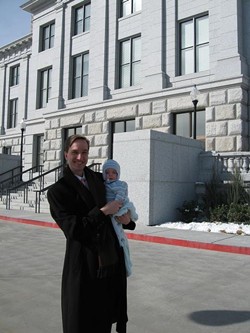
Gavin:
Considering the way many local businesses and individuals have made
use of the internet and its various outlets, what do you believe that
has done for both the local exposure as well as our economy?
Pete:
There is no doubt that the Internet is an essential driver of our
economy today. The disappearance of our manufacturing base has given
way to an information economy that depends upon good communication.
I'm not an economist, and even if I was I think it is anyone's guess
as to whether this is sustainable. Unemployment numbers currently
show otherwise. I read last week that even Silicon Valley and the
Bay area is showing 9% unemployment. I believe we need a variety of
robust sectors to have a robust economy. We can't put all our eggs
in one basket.
Gavin:
Is there anything tech-wise you wish we had here in SLC or Utah in
general? Or something you wish a local organization or company would
do along those lines?
Pete:
Without naming names, I have been dismayed that every time a bad
Internet bill comes up at the legislature, the industry group remain
mostly silent on it. I spent a lot of time this last session
fighting a bill that requires ISPs to hand over customer information
to law enforcement without a warrant, which is otherwise easily
obtained. It is flatly unconstitutional. Yet the lobbying group
that represents technology companies in Utah did not take a stand on
it. Yet when some GOP pet-project like vouchers rolls around,
they're the first in line. I wish there was an independent
organization that stood up for Internet freedom and liberty like what
the Electronic Frontier Foundation does on a national basis. I don't
have the time to start one myself, but I would certainly be a
supporter.
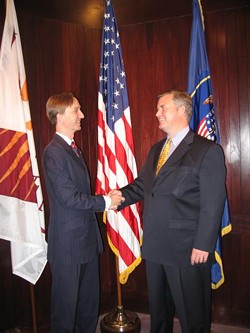
Gavin:
I briefly have heard you speak about Net Neutrality and what both
companies and the government are doing to hinder or increase it. What
do you believe should be done to protect that?
Pete:
The FCC should be given teeth to effectively slap companies that
violate net-neutrality for anti-competitive or political reasons. As
far as economic reasons go, Comcast should be free to throttle their
subscribers how they wish, but their subscribers should be able to
jump ship to another provider easily. This goes back to municipal
fiber and increasing consumer choice. However, this isn't the
current direction we're heading.
Gavin:
With the internet progressing as it has over the years, where do you
see us being five years from now, both tech and system wise?
Pete:
Video rental stores are disappearing, and I can see all of our media
delivery converging to the Internet. Even what is carried on HD
BluRay will eventually be available at same and/or better quality
online. Sony is starting to roll out 4K projection and I'm sure
we're going to see that replace existing HDTV's eventually. This
will all push bandwidth demand to a breaking point in the U.S.
because we're simply not adequately expanding our fiber
infrastructure for the looming future. I've seen XMission's own
connection grow from 1.5 Megabit to 23 Gigabit and it will continue
expanding as long as we're in operation. Individuals who think that
what they've got now is sufficient for the next decade are fooling
themselves. I don't see many people reverting to dialup connections.
We're also going to see the Internet fade as a visible
infrastructure. In that, it simply just be a part of our lives like
electricity. People won't think about "getting on the Internet"
to get showtimes, their phone or pad or refrigerator will simply use
the Internet transparently to give them that information.
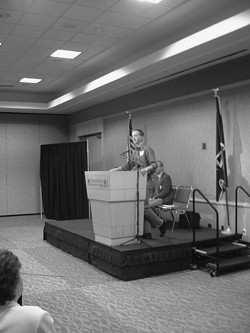
Gavin:
What can we expect from you and the company over the rest of the
year?
Pete:
Although I'd love to spill my hopes for expansion, I have long kept a
tight lip about future projects until we have something concrete to
launch. XMission is continuing to expand its latest project
Stackable and refine our existing services to make them easier for
customers to use.
Gavin:
Aside the obvious, is there anything you'd like to plug or
promote?
Pete:
My personal website, from the front page,
I have links to mailing lists, and my Twitter and Facebook feeds. If
you have any interest about technology and Utah, I promise I won't
waste your time with a lot of noise. I also started a non-profit last
year, The Electroregeneration Society. We take
decommissioned computers, erase and re-purpose them for other
non-profits and people in need. If we can't use them, we strip them
for the bare materials and make sure they're recycled properly. The
organization can use volunteers and financial help.
| Follow Gavin's Underground: |
|
|
|